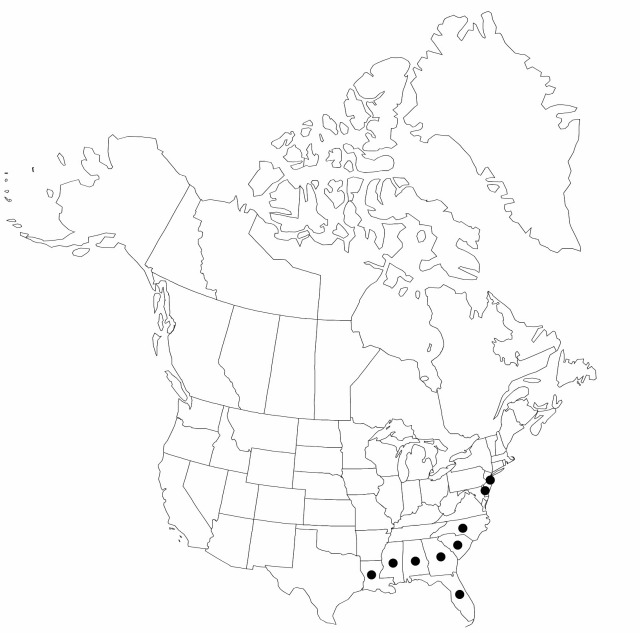Difference between revisions of "Rhynchospora careyana"
Rhodora 20: 140. 1918.
FNA>Volume Importer |
FNA>Volume Importer |
(No difference)
| |
Revision as of 21:07, 16 December 2019
Plants perennial, cespitose, also strongly clonal, 80–150 cm; rhizomes stoloniferous, scaly, 3–4 mm thick. Culms stiffly erect, leafy, triangular, multiribbed. Leaves ascending, overtopped by inflorescence; principal leaves flat proximally, 3–12 mm wide, apex attenuate, trigonous. Inflorescences terminal and axillary from distal culm nodes, mostly diffuse clusters of corymbs; clusters mostly loose; bracteal leaves usually exceeded by inflorescences. Spikelets red-brown or orangish tint, lanceoloid, 13–18 mm, apex acuminate; fertile scales lance-ovate, 10–13 mm, apex acute to acuminate, midrib short-excurrent, minutely scabrous. Flowers: longer perianth bristles extending from near tubercle base to 3 mm beyond, antrorsely barbellate. Fruits 1–2 per spikelet, 15–24 mm; body pyriform-obovoid, compressed, 4–5 × 2.8–3.5 mm, margins thick; surfaces concave, finely transversely striate, minutely cancellate; tubercle abruptly subulate, 2-grooved, 11–20 mm.
Phenology: Fruiting summer–fall.
Habitat: Emergent in pond, lake, and river shallows, mostly acid substrates
Elevation: 0–200 m
Distribution

Ala., Del., Fla., Ga., La., Miss., N.J., N.C., S.C., West Indies (Cuba, Jamaica).
Discussion
Rhynchospora careyana forms clones as extensive as those of R. tracyi and R. inundata and is often found over acres of pond shallows and wet savanna, often sharing the habitat with R. traceyi. A most interesting and distinctive field feature for R. careyana is the orange tint of its spikelets.
Selected References
None.